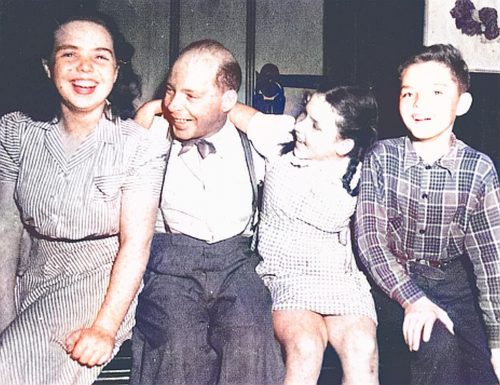Letters From Okinawa
This blog contains letters written by my Grandfather, William Henry Knowlton, to my Grandmother, Katherine Knowlton, and a few other people, including their children. He travelled to Okinawa and was there during the last great battle of the Second World War. He spent a year from 1944-45 and wrote 128 letters, They can be read through date menus in the top ribbon.there’s more!
Red Cross History Document
Stephanie Cutter, Historical Programs and Collections Assistant, American Red Cross, very kindly sent me some American Red Cross historical documents. One of them is an excerpt from a history of the Pacific Theater in World War Two document, The History of the American National Red Cross Volume XIV: The ARC During WWII in the Pacific Theater. The current document excerpt is a pdf file. It is a photographic record of a typewritten document, cited as: Jameson, Raymond. The History of the American National Red Cross Volume XIV: The ARC During WWII in the Pacific Theater. (Washington, DC: The American National Red Cross, 1950). Suzanne andthere’s more!
Henry Knowlton was a Correspondent for the Red Cross
I found this U.S. Army document: World War II Diary, page 217there’s more!
Notes on Okinawa, by Julian Garrett
Boomerang is the American Red Cross publication for the far east theater of operation during and just after World War II. Among the many services that the American Red Cross provided American military personnel during and after WW II were Club and Recreational facilities. The U.S. military started taking over the management of the Red Cross Clubs between mid 1947 and mid 1948, at which time they became military Clubs. The following essay is taken from the “OKINAWA” issue of Boomerang from June 1947. COPYRIGHT©2010 Donn E. Cuson TO EDITORS: The BOOMERANG invites reprinting of its material, in whole or in part. Its material isthere’s more!
Saturday Evening Post article: “The Correspondents”
This article, mentioned by name in the February 21 letter, as being in the February 3, 1945 issue of Saturday Evening Post, is one of two sources I have encountered, for information on English-language news correspondents and photographers who reported on the Pacific Campaign of World War Two. The other source was the US Army’s document World War Two Diary, p. 217. Both sources are used in the table contained in this blog, at Henry Knowlton was a war correspondent. My grandfather Henry Knowlton is listed as an American Red Cross correspondent in the Army Diary. there’s more!
Letter from Uncle Henry (known as Henry Kaye to Grandpa Knowlton) Re: the Purple Heart
Uncle Henry writes re the Purple Heart: “Here are some more details: Okinawa was very close to Japan, so paratroopers were feared. One night the sky was lit up by star shells so everyone ran for their foxholes. [editor’s note: the light from the star shells would have made paratroopers very visible.] Unfortunately, Grandpa headed out of the tent (a “wall” tent) and tripped on one of the ropes holding up the side of the tent, landing head first on the adjacent tent stake which hit in the middle of his nose. It was double-ugly and he was asked not to come to mess forthere’s more!
What Japan Has Waiting For Us
In his article, “What Japan Has Waiting For Us” [July 28, 1945], William McGaffin reported on the new tactics the Japanese army had developed. By: Zack Waltz, Saturday Evening Post Published: August 14, 2010 How the Future Looked Without the Bomb there’s more!
New Yorker article by John Lardner from Feb. 10, 1945
printed without permission there’s more!
Chips getting Red Cross doughnut
The following story is taken from the web site of CBC’s radio show, “As It Happens”: The tent in the picture is very similar to the ones Grandpa Knowlton would have worked in. The letters “ARC” written on the side of the tent were for “American Red Cross”. ********************************************************************************** According to U.S. soldiers, the German shepherd-husky mix raced into an Italian machine-gun nest in 1942, attacking an enemy soldier by the throat and pulling the gun from its mount. “The soldiers were being pinned down on a beach … and he broke loose from his handler. It wasn’t his job to do thatthere’s more!
